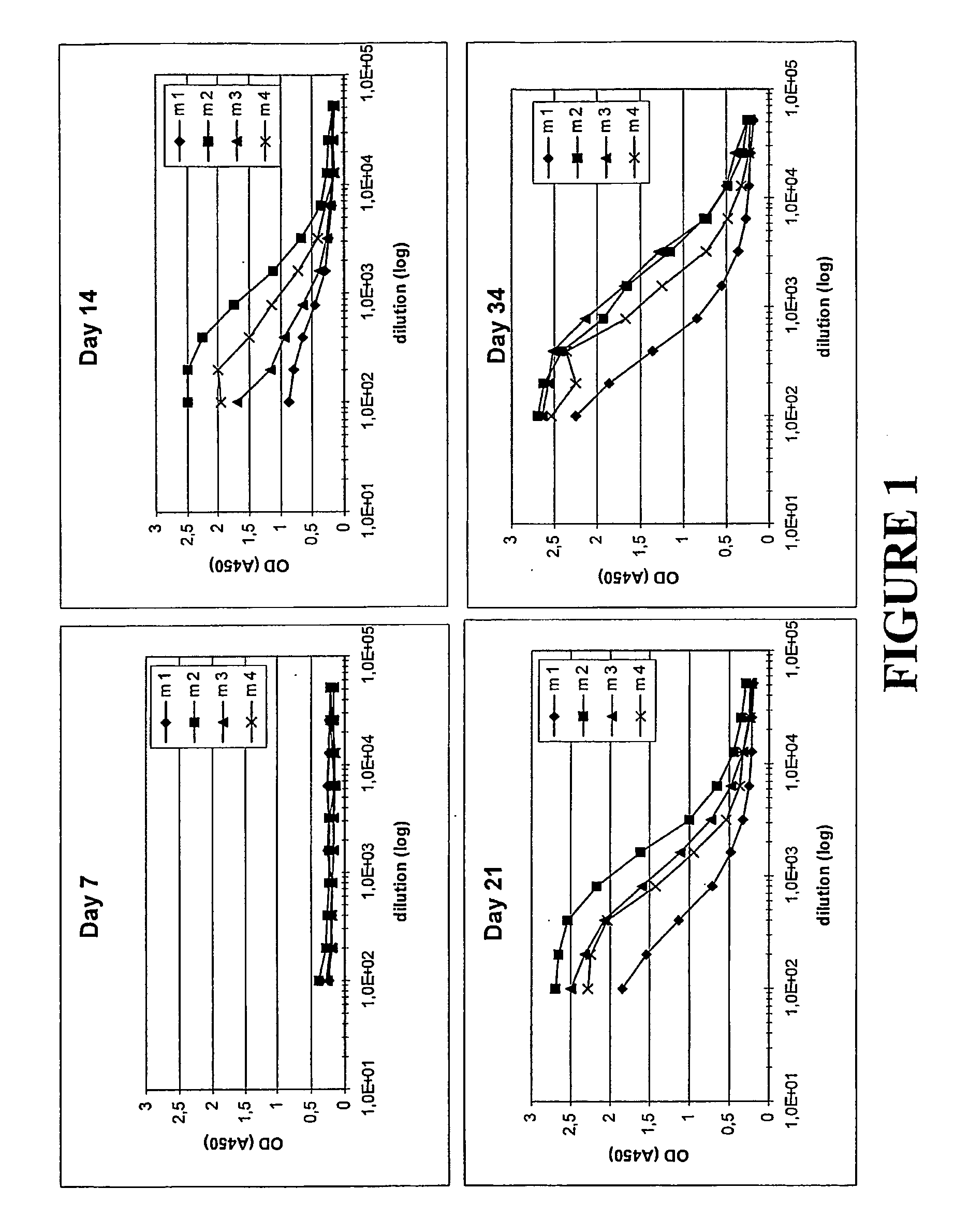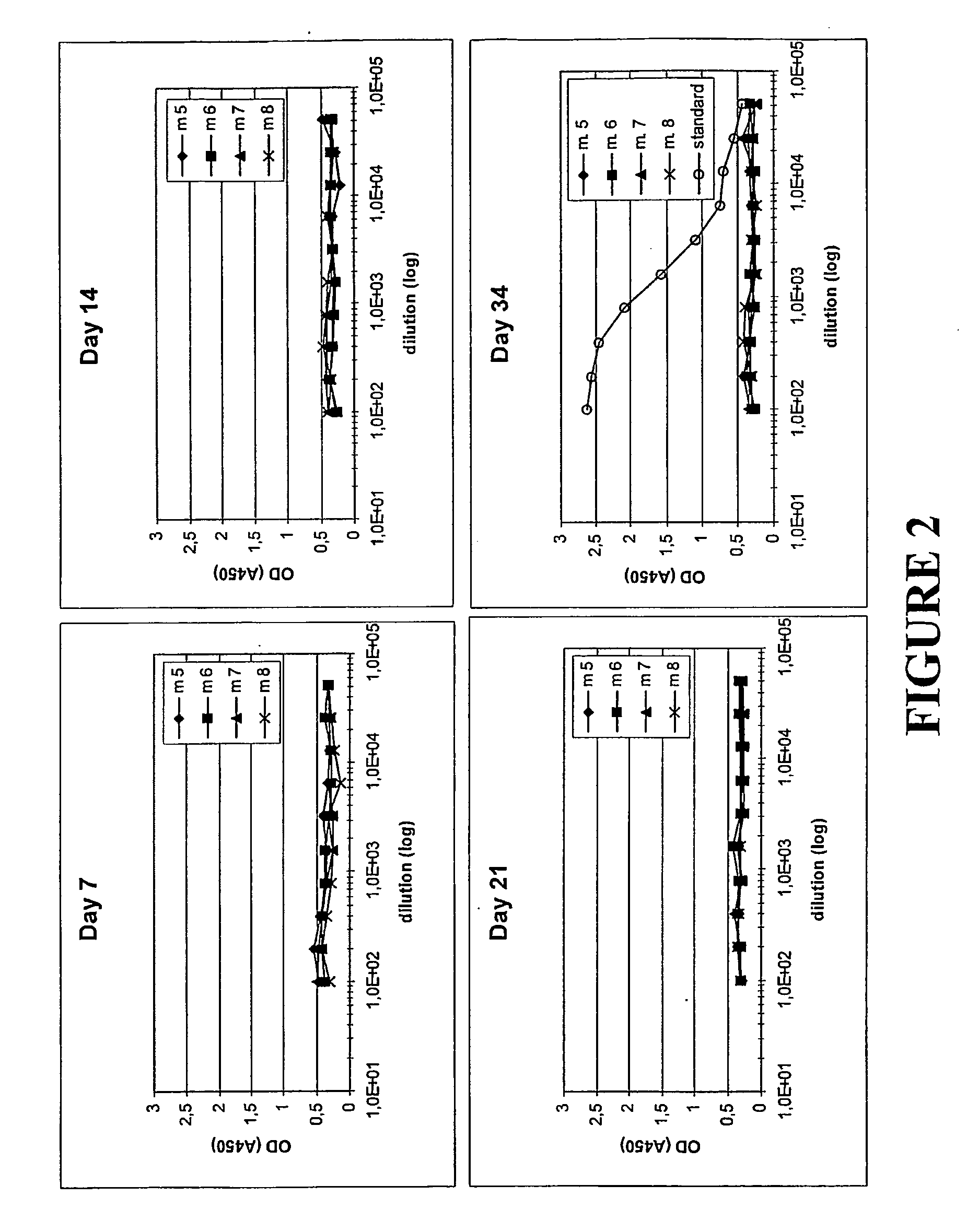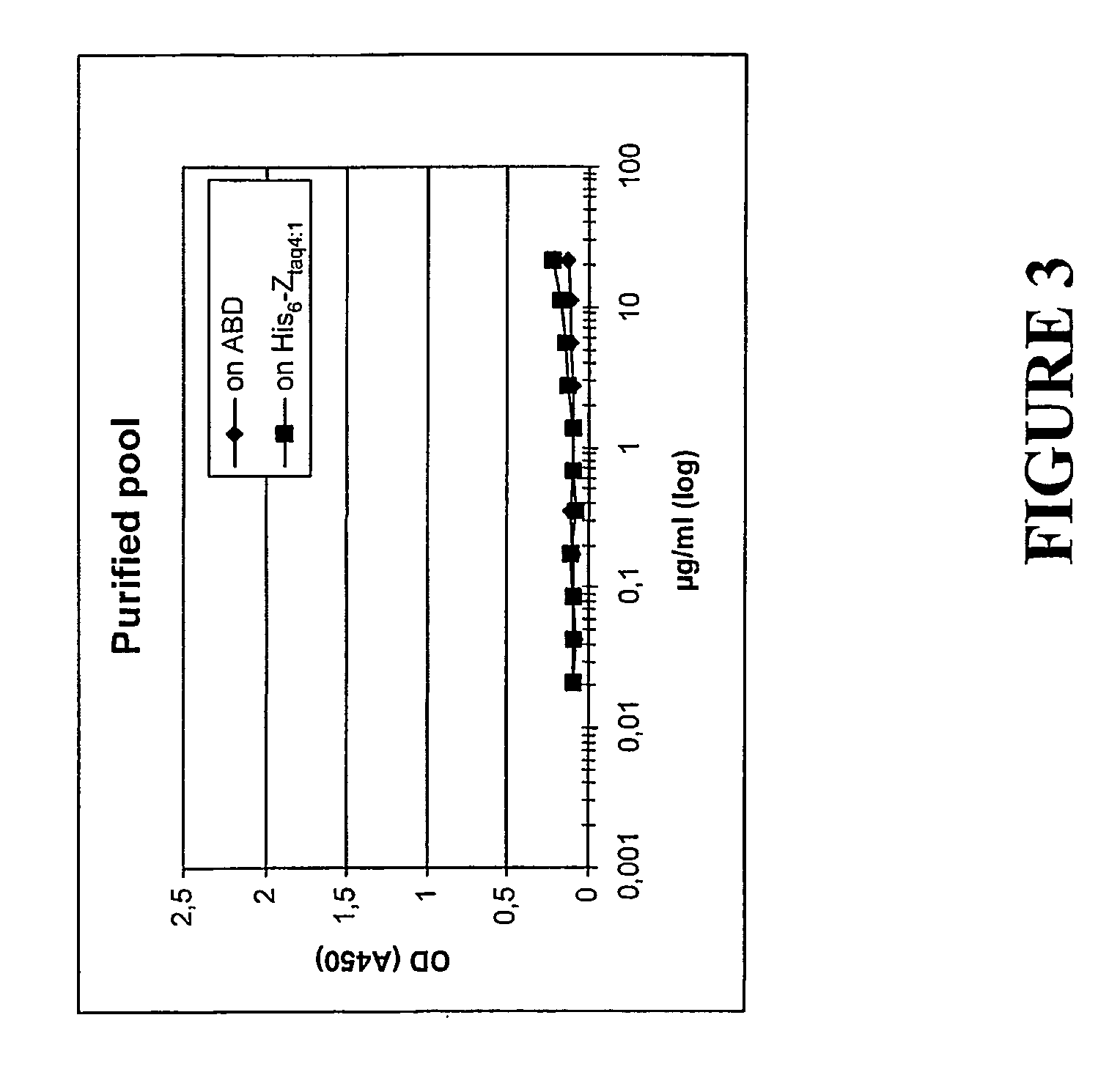Use of Serum Albumin Binding Peptides Conjugates for the Preparation of a Medicament
- Summary
- Abstract
- Description
- Claims
- Application Information
AI Technical Summary
Benefits of technology
Problems solved by technology
Method used
Image
Examples
example 2
Humoral Immune Response in Mice Following Administration of Different Molecules at Various Frequencies
Molecules Studied
[0110]In this Example, the inventive concept was again studied through a comparison of the antibody response in mice upon administration of different molecules. The molecules administered were the following:
[0111]His6-ZTaq4:5—a variant of protein Z, in turn derived from the B domain of staphylococcal protein A. The ZTaq4:5 variant was produced using recombinant DNA technology, through expression of the DNA sequence encoding it, and simultaneously provided with a hexahistidyl tag according to known molecular biology procedures. ZTaq4:5, including its selection and amino acid sequence, is described in Gunneriusson E et al, supra, where it is denoted ZTaq S1-1. Used for comparative purposes.
[0112]ZTaq4:1-ABD—as described in Example 1. Used to illustrate the invention.
[0113]ABD—the albumin binding domain (ABD) of streptococcal protein G strain G148 (see above for refere...
example 3
Humoural Immune Response in Mice Following Administration of Multimers of a Z Variant Provided with an Albumin Binding Moiety
Molecules Studied
[0133]As in Examples 1 and 2, the inventive concept was again studied through a comparison of the antibody response in mice upon administration of different molecules. The molecules administered were the following:
[0134]His6-ZTaq4:5—as described in Example 2. Used for comparative purposes.
[0135]ABD-Zher2:4—a fusion protein between the albumin binding domain (ABD) of streptococcal protein G strain G148 (see above) and the Z variant Zher2:4. Zher2:4 was selected from a library of combinatorial variants of Z and characterized. In the selection procedure, purified protein corresponding to the cancer antigen HER2 (also described in the literature as neu, HER2 / neu or c-erbB-2) was used as the target molecule. Zher2:4 was found to interact with HER2 with a KD value of approximately 50 nM. The amino acid sequence of Zher2:4, in standard one-letter cod...
example 4
Reduction of Immune Response Tested with Dimers of Further Biologically Active Molecules
Molecules Studied
[0153]The aim of this study was also to assess if the antibodies, generated after immunization, are able to inhibit the binding between specific Affibody® molecules and their target protein. The previous observation of a reduction in immune response when a biologically active protein is coupled to an albumin binding domain was confirmed using two other Affibody® molecules: (ZAβ3)2 and ABD-(ZAβ3)2.
[0154](ZAβ3)2—a dimer of a variant of protein Z, in turn derived from the B domain of staphylococcal protein A. The ZAβ3 variant was produced using recombinant DNA technology, through expression of the DNA sequence encoding it, according to known molecular biology procedures. Used for comparative purposes.
[0155]ABD-(ZAβ3)2— a fusion protein between the albumin binding domain (ABD) and a dimer of the Z variant ZAβ3 prepared in accordance with known molecular biology procedures. Used to il...
PUM
| Property | Measurement | Unit |
|---|---|---|
| Molar density | aaaaa | aaaaa |
| Molar density | aaaaa | aaaaa |
| Molar density | aaaaa | aaaaa |
Abstract
Description
Claims
Application Information
 Login to View More
Login to View More - R&D
- Intellectual Property
- Life Sciences
- Materials
- Tech Scout
- Unparalleled Data Quality
- Higher Quality Content
- 60% Fewer Hallucinations
Browse by: Latest US Patents, China's latest patents, Technical Efficacy Thesaurus, Application Domain, Technology Topic, Popular Technical Reports.
© 2025 PatSnap. All rights reserved.Legal|Privacy policy|Modern Slavery Act Transparency Statement|Sitemap|About US| Contact US: help@patsnap.com



